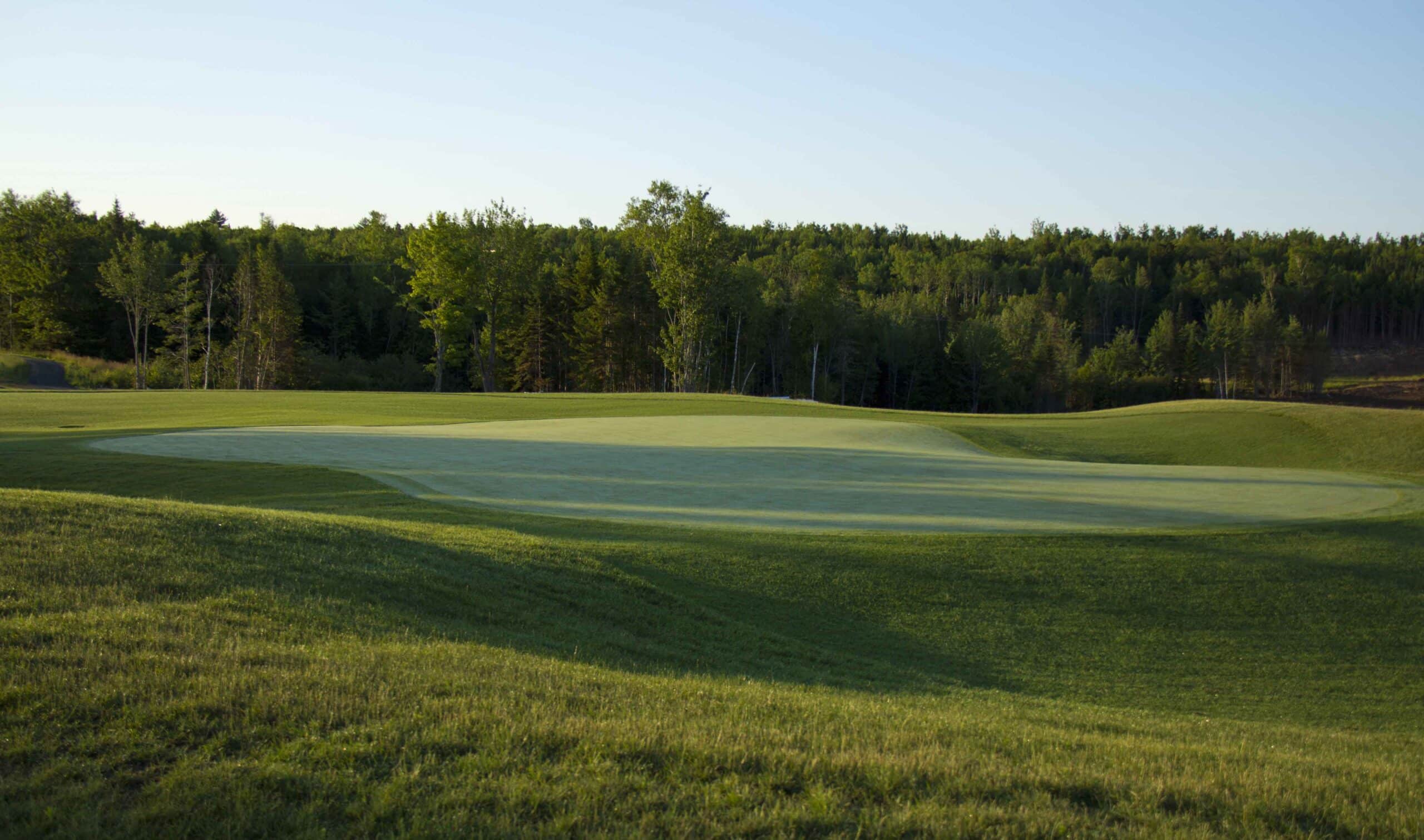
West Hills
Fredericton
Greens Update, Flag Locations, and Green speed
Now that July is here and the weather is better, we are seeing improvements in the density of turf in the greens. With the stronger turf we will revert to practices that you are accustom to seeing on a regular basis. Our flag system will return to at least 15 of the greens, as four, six and eight are still a bit thin to use the whole green.


Plants use roots as storage devices for stressful times and with a diminished root mass the plants are less likely to handle foot traffic, mowing and general play. Add to that the bumpy playing condition in the weak areas and we have chosen to keep the flags in healthier areas of those greens for the next little while.

Our flag system is as follows;
Red/white for the front of the green, Black/white for the middle and Blue/white for the back portion of the green. Last year there was some confusion of the the blue and black at a distance, so we increased the white portion of the black flag to help differentiate between the two.
One question I get asked a lot is when will the green speed increase. There are a lot of factors that affect the speed at which a ball rolls on a green. Height of cut has probably the most effect, as the shorter the turf is the less resistance on the ball. Due to the damage on the greens this spring we started out the year mowing our greens at .200 thousands of an inch (.250 is a quarter inch for reference), to aid in recovery. We had intended on lowering the height last week but with the extreame heat we held off, as it can be stressful process. Once the heat had abated we began the process of lowering the height of cut, or HOC. Here’s how that works.


This is the gauge we use to set the height on the cutting reels. The gauge works by measuring the distance from the bottom of the steel dome to plate under my fingers. The left photo is where we started the year at .200. The right is the target height, .120. Clearly not a lot of distance, but a huge difference in speed.
Below is a photo of one of our cutting heads. In the picture it is upside down, and the two rollers would normally sit on the green as the unit mowed. The blade under my thumb is called a bed knife and the series of blades under my forefinger are the cutting reel. During operation the reel turns under hydraulic pressure and catches the grass against the bed knife. We adjust the height of cut by moving the rollers up or down to increase or decrease the distance of the bed knife to the ground.

Our typical summer height is about .120, and as of Friday last week we were down to .155. On Monday we dropped by .007 and will do so again on for Thursday morning to take us to .140. We will remain at that height until next Monday when we will continue the process but at smaller increments. This will dramatically increase the greens speed. There are other aspects of our maintenance program that affect greens speed. I will cover them in a later post but for now expect an increase is speed over the next week or so based on the reduced height of cut. Enjoy your day out there!



